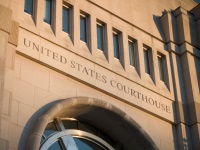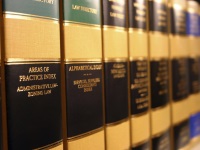On September 6, 2013, the SEC charged the former head of investor relations at First Solar Inc., an Arizona-based solar company, with violating Regulation FD, which is designed to prevent issuers from selectively disclosing material nonpublic information to certain market participants before disclosing the information to the general public. In this matter, the SEC determined that Lawrence D. Polizzotto violated Regulation FD when he indicated in “one-on-one” phone conversations with about 20 sell-side analysts and institutional investors that the company was unlikely to receive a much anticipated loan guarantee from the U.S. Department of Energy. When First Solar disclosed the same information the following morning in a press release, the company’s stock dropped 6 percent. In addition to a cease-and-desist order, Polizzotto agreed to pay $50,000 to settle the SEC’s charges. The SEC determined not to bring an enforcement action against First Solar, due in part to the company’s “extraordinary cooperation” with the investigation.
The Polizzotto action is noteworthy for several reasons. First, is the contrast between that action and the only Regulation FD case to go to litigation. In June 2004, the SEC filed a civil action against Siebel Systems, Inc. for violating Regulation FD and an earlier SEC cease-and-desist order, and against two of the company’s senior executives for allegedly aiding and abetting Siebel’s violations. The alleged violations were very similar to those alleged against Polizzotto: in both cases, the SEC alleged that the company, through its executives, violated Regulation FD by selectively disclosing material nonpublic information to analysts and favored investors in one-on-one meetings before disclosing it publicly. There were, however, several differences in the facts of the two matters. In the Siebel matter, the U.S. District Court for the Southern District of New York held that the nonpublic statements made at the one-on-one meetings were not material because they did not add to, contradict, or significantly alter the information that the company had previously made available to the general public. Although not literally the same as the public statements, the court found that the private statements generally conveyed the same material information. On the other hand, the SEC deemed that Polizzotto’s statements provided new information about the status of the loan guarantees for one of company’s major projects, even though a letter from a Congressional committee to the Energy Department about the loan guarantee program and the status of conditional commitments, including three involving First Solar, had already caused concern within the solar industry about whether the Energy Department would be able to move forward with its conditional commitments. The final blow to Polizzotto may have been First Solar’s recognition of the significance of private statements to analysts and particular investors about the loss of the loan guarantee. For example, a company lawyer had specifically advised that, in discussing this development, the company would “be restricted by Regulation FD in any [sic] answering questions asked by analysts, investors, etc. until such time that we do issue a press release or post to our website….” Thus, despite the fact that the court in the Siebel Systems action did not consider an 8 percent stock price movement following public disclosure to be material, the SEC here considered the 6 percent stock price movement to be material. READ MORE →









